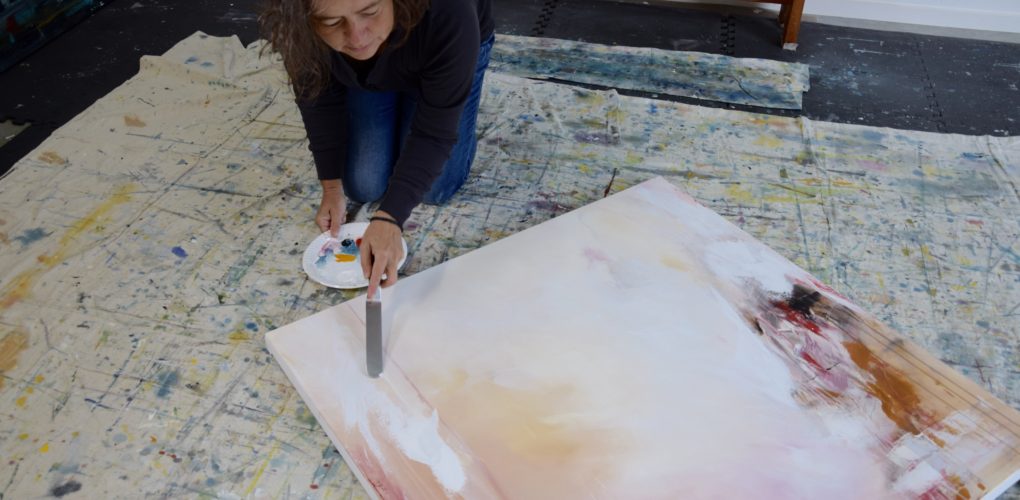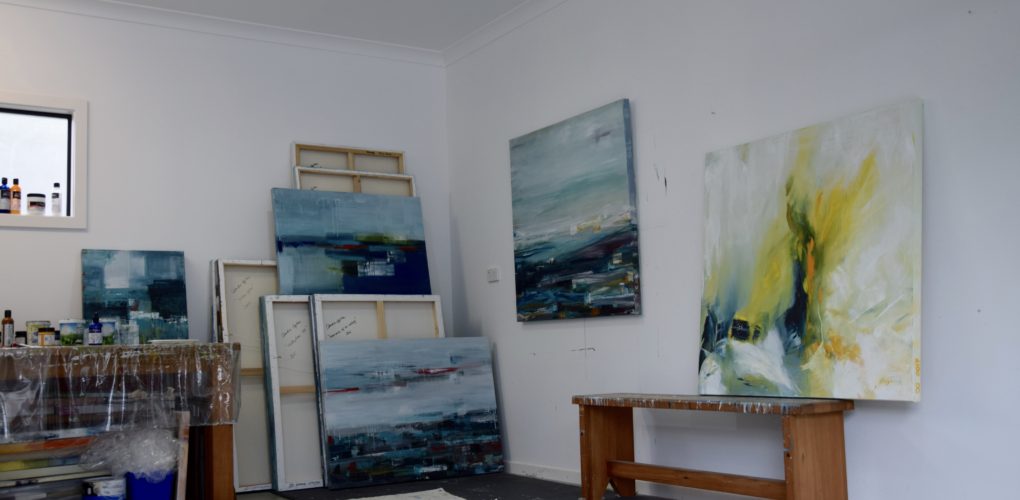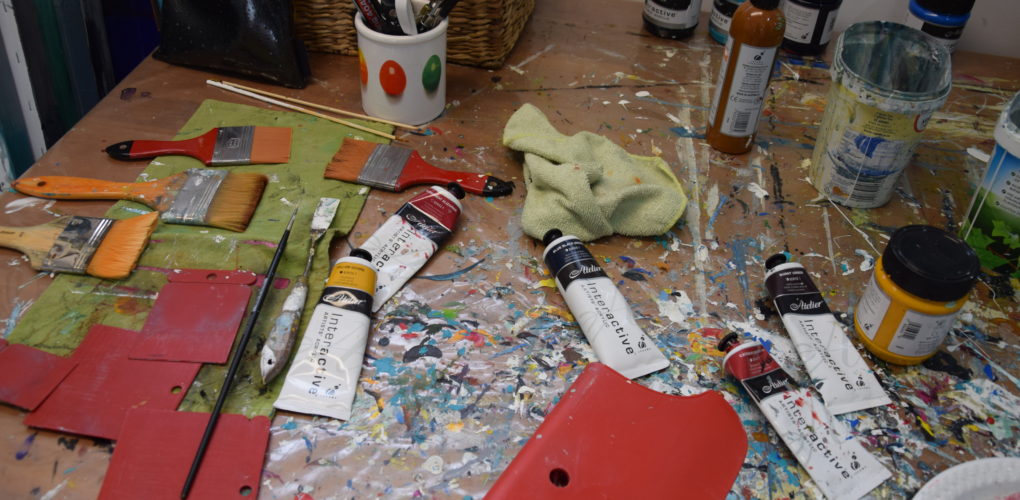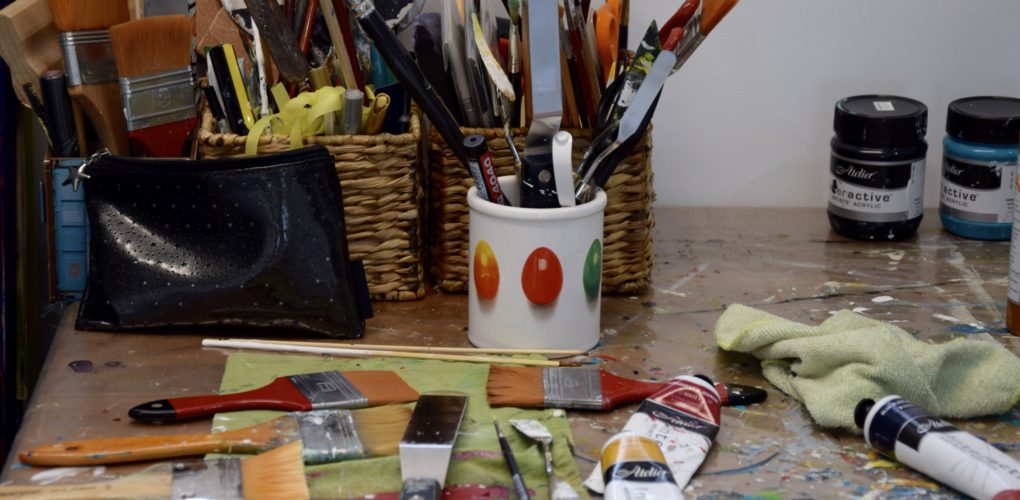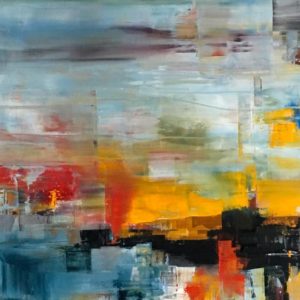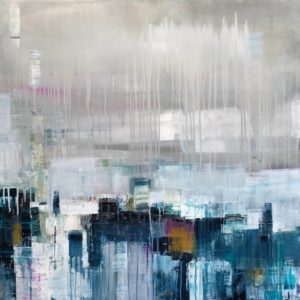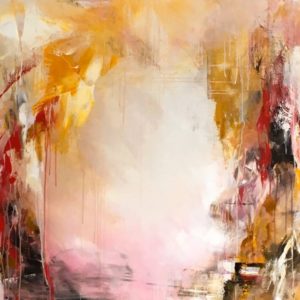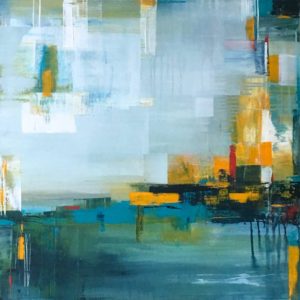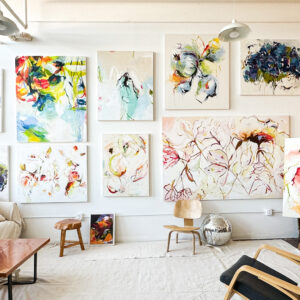Inside the Studio
 Claudia Grutke’s Paintings Connect Seascapes and Dreams
Claudia Grutke’s Paintings Connect Seascapes and Dreams
What are the major themes you pursue in your work?
A part of me always wanted to be an artist, but I did the sensible thing first and chose a very grounded profession. Much to my surprise, I stayed in healthcare for more than 20 years. It took an earthquake with all it’s consequences to initiate change. It was time. I am a self taught artist–I construct, deconstruct, experiment, contemplate, let go, and then I start again.
My paintings are unplanned. In my creative process I let myself be guided by my intuition. Images evolve as emotional reflections of my subject. Painting for me is about the process; however, there are recurring themes such as the beach, sea, and the harbor. I live by the ocean, and there is a little harbor that is truly such beautiful scenery. Memories of life in a big city with a busy port are another subject of mine… I create structures, texture, and layers from these memories. These landscapes and seascapes typically are semi-abstract. The viewer is invited to travel to a destination of their choice. And then there are dreams…. spontaneous gestural abstract moments.
How did you first get interested in your medium, and what draws you to it specifically?
I got introduced to acrylic painting when I attended an art class many years ago. Acrylics allow me to be spontaneous, as there is an immediate directness about them. When I stretch the limits of the paints, they surprise me.
How has your style and practice changed over the years?
A good question and hard for me to answer as I’m only in my early years of practice. I have gained a lot of confidence and learned to trust my process. If anything has changed at all, it is probably that now I have gotten a clearer vision of what I want to paint and how I want go about it.
Can you walk us through your process? Do you begin with a sketch, or do you just jump in? How long do you spend on one work? How do you know when it is finished?
My process usually starts with a vague idea that is based on a photo, feeling, conversation, or memory. There are no sketches: I jump right into the painting. In the beginning, I try not to think. One brushstroke appears, the palette knife in my hand creates a a smear on my canvas. I act. One layer in the painting informs the next. I react. Sprays of water lead to paint dripping. Gravity adds an element of coincidence and challenges me. My intuition guides me through the process, and I just follow. My paintings may take days or weeks, depending on the number of layers necessary. They are finished when there is nothing more to add and the balance feels right.
Who are some of your favorite artists, and why?
There are so many artists that I admire, that you will find me struggling to select a few….
Starting with Bauhaus artists–Lyonel Feininger for his use of light and form and Paul Klee for the use of color and sense of humor. And then there is Gerhard Richter; I absolutely love his work.
I would like two include two female artists in my list of favorites, both are from the southern hemisphere. One is Gretchen Albrecht for her luminous color field paintings and use of geometric form. The other one is aboriginal artist Sally Gabori, who started painting very late in life and created colorful abstracts that show us how she sees her world. Her works are hugely impressive and inspiring.
What was the best advice given to you as an artist?
Follow your intuition, paint from your heart and be bold. And always be true to yourself.
Prefer to work with music or in silence?
The studio is always filled with music. My playlist is a forever evolving and changing mix of mostly instrumental, almost meditative music, with some classical pieces thrown in.
